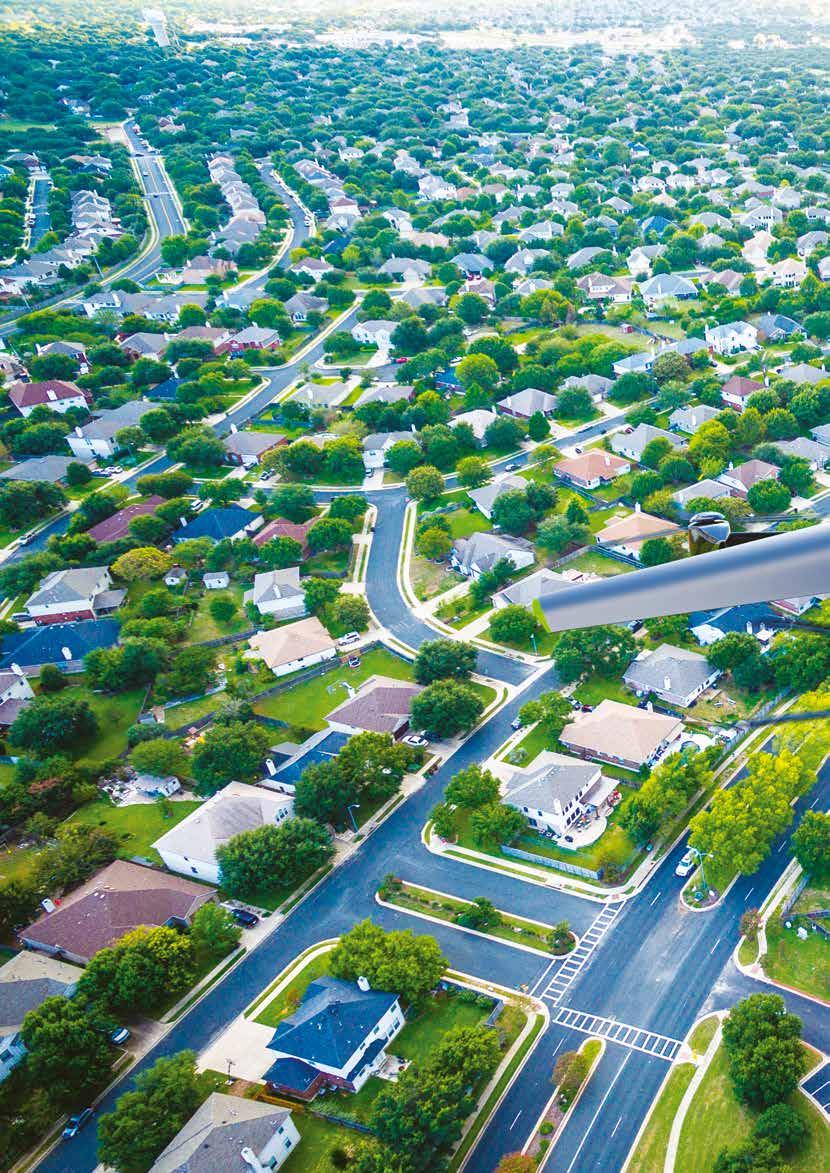
7 minute read
UP, UP
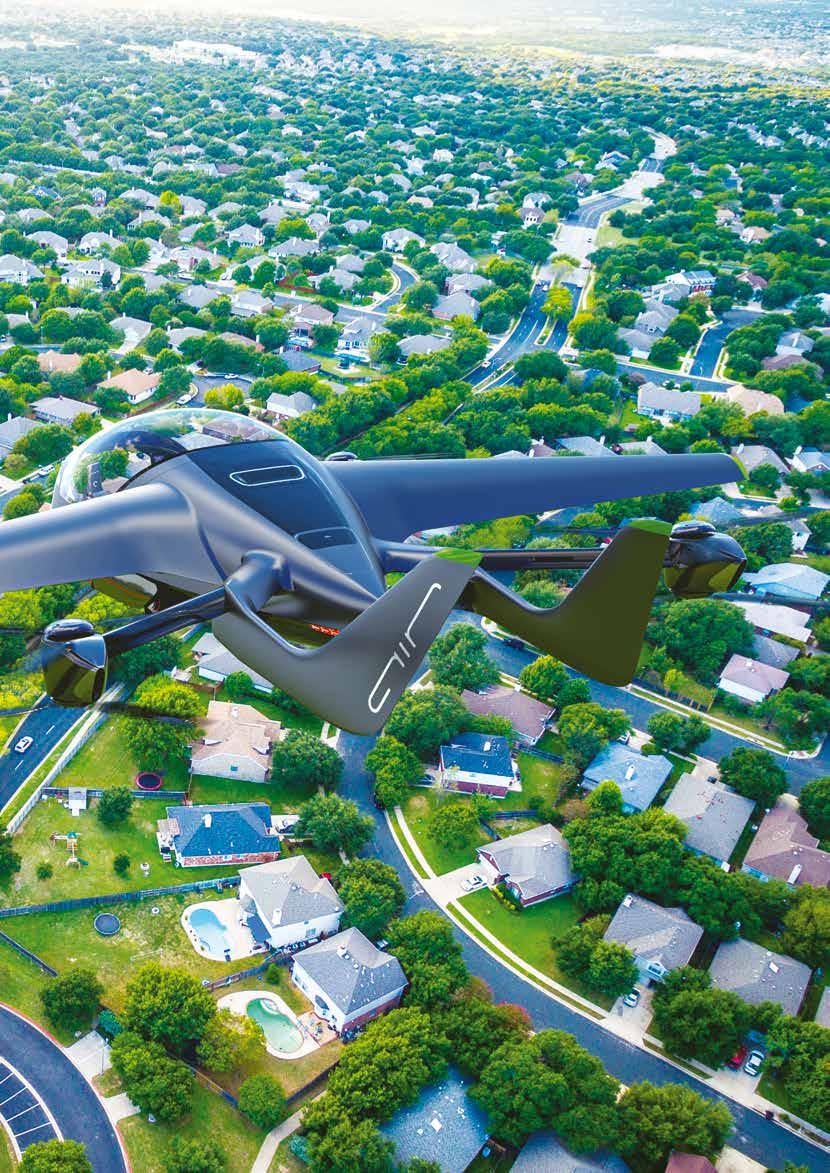
It’s time for work, but instead of reaching for the car keys, you grab your morning coffee, walk into the garage and there’s an electric aircraft waiting for you. You climb in, roll out the door and take off at the press of a button towards the office, as your slurp said coffee. Ten minutes later (normally a 45-minute car ride) the aircraft touches down on the rooftop landing pad of your office building. You’ve barely finished the morning’s headlines, or your coffee, and you’re ready to start the day.
Advertisement
Welcome to the next generation of aviation. A world where Electric Vertical Takeoff & Landing (eVTOL) aircraft will revolutionise the way we commute, travel and transport goods. Whilst this sounds like an ultrafuturistic scene out of The Jetsons, the reality is not actually that far away. The average George and Jane Jetson will be able to fly to work, university or footy practice, and possibly without needing the level of training or experience that today’s pilots are required to have. So, what does that mean for our industry and particularly the recreational aviation industry? It’s an interesting question. Does everyone become a ‘recreational pilot’ or will it become as straightforward as obtaining your car or boat licence?
Dozens of advanced aerospace engineering companies are rapidly developing eVTOL prototypes, many of which are likely to have safe, accessible and marketable products and they’re aiming to take orders from 2024. They’re largely working to FAA standards, and FAA appears to have quite the appetite for change. The industry has already attracted significant investment, with the global eVTOL market expected to grow from USD $12.53 billion in 2023 to USD $35.79 billion by 2032. Some manufacturers are anticipating up to 500,000 units to be sold annually in the US. Horizon Aircraft, the developers of the world’s first eVTOL, can fly most of its mission exactly like a normal aircraft while offering industry-leading speed, range and operational utility. The company has just unveiled its eVTOL half-scale prototype – the Cavorite X5 –the only aircraft of its kind that completely covers its lift fans so it can spend 98% of its flight time in lowdrag, wing born flight. This half-scale prototype has a wingspan of 6.7 metres, a length of 4.6 metres and a takeoff weight of around 227kg. Whilst the Cavorite X5 still has to go through rigid hover, flight and transition testing, the progress in this space is staggering. Right now, there are hundreds of other companies joining the race to build the ultimate electric flying machine.
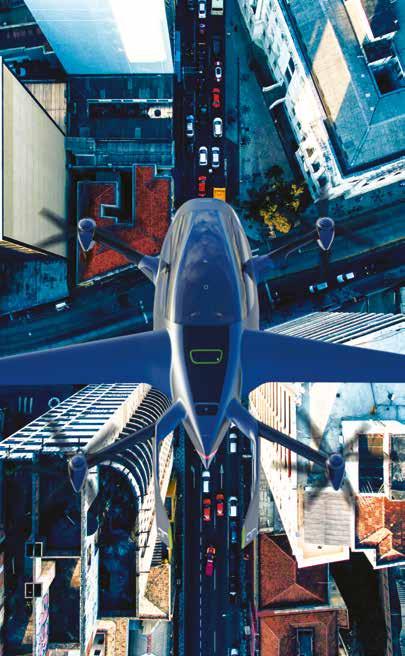
CLEAN, GREEN & QUIET
You don’t need to be an aviator to appreciate the long list of benefits that eVTOL can bring to our world. In fact, it’s not today’s ‘aviators’ that will fit the core market – the appeal is much broader than just pilots. With the environment in mind, combustion engines mean more emissions. Australia’s aviation industry accounts for an estimated 12 per cent of all transportrelated emissions – In 2016, the country’s aviation sector (both domestic and international) contributed around 22 million tonnes of carbon dioxide emissions and you’d imagine that number is much higher today as our population and demand for air travel grows. Carbon dioxide emissions aren’t the only type of pollution that is reduced either. eVTOLs are much quieter to operate than their traditional counterparts, so noise pollution will drop, making them more compatible for use in urban areas. Perhaps we can say goodbye to airport curfews. In fact, the way that airports are used today will need to be reimagined.
As eVTOLs can take off and land vertically, there will be a reduced need for runways and other ground infrastructure. It’s likely we’ll see the reinvention of airports and the introduction of vertiports for crowded urban areas where space is limited. Think rooftops, nearby tourist destinations or suburban areas for convenience. Will homes have their own vertiports, or will they be more like bus stops you can find around your neighbourhood? We will have to wait and see. Melbourne’s eastern suburbs has been earmarked as the home of Australia’s first vertiport. Caribbean Park in Scoresby, Victoria, will be the test case of how this vertiport will revolutionise logistics, emergency services, regional connectivity and passenger transport. It’s likely that major cities will be home to dozens of these vertiports, which has knock-on effects to local government planning restrictions and guidelines. With more and more aircraft in the air, the concept of airspace will need to be reassessed too. We will effectively need to create highways up in the sky to manage traffic flow just like we have on solid ground.
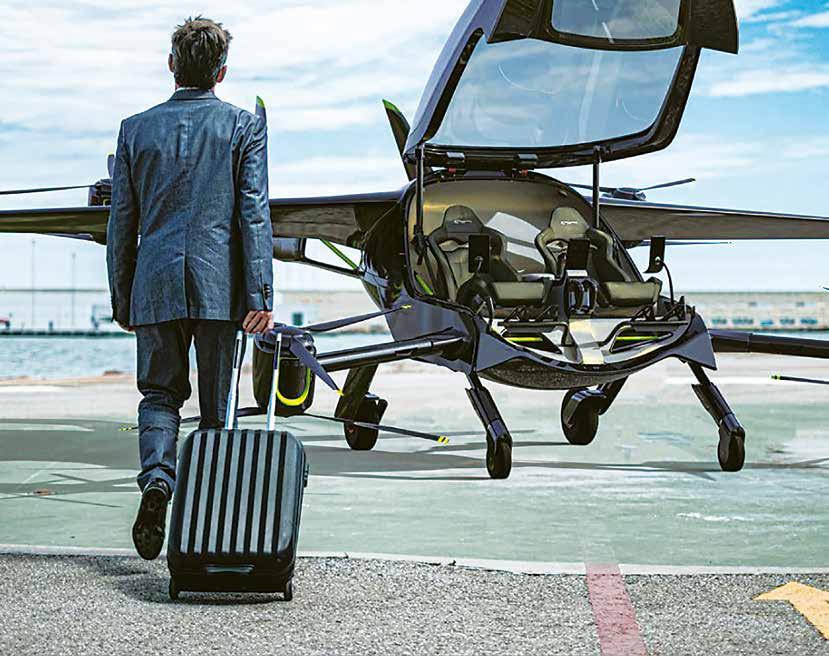
The real kicker is how cost-effective eVTOL is compared to traditional aircraft. They use significantly less energy and require fewer components. As a result, operating costs will (hopefully) be lower which will ultimately make them more attractive for commercial and personal use. A study by NASA predicts that eVTOL aircraft could provide cost savings of up to 60% when compared with traditional aircraft. From a public transportation perspective, the World Economic Forum (WEF) has predicted that eVTOLs could reduce the cost of transportation in urban areas by up to 40%.
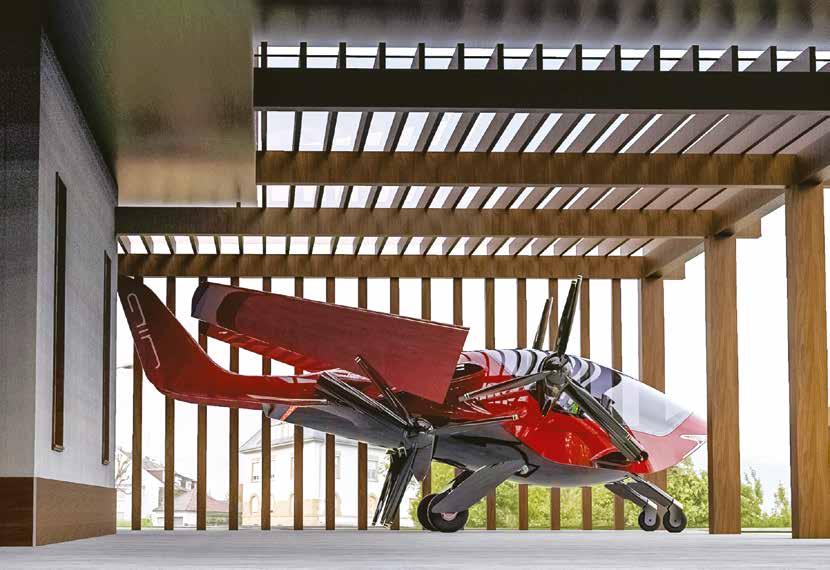
Cost wise, a number of manufacturers are aiming for the $250,000 price point (in today’s terms). For one person, that’s a lot. If you folded two cars in a household, suddenly it halves – but still a lot, for most of us. But once you factor in things like rideshare –either privately renting through the likes of an Uber, or through a syndicate arrangement – it could be more accessible than you think.
Challenges Of The Bleeding Edge
Whilst leaps and bounds are being made in the development of eVTOL aircraft, there is still a hefty amount of skepticism surrounding the concept. This is to be expected – have a look at electric vehicles, bikes, scooters and just about any other disruptive innovation that transforms how we do everyday activities. Most of the skepticism revolves around the safety and reliability of eVTOLs, and rightly so. Nobody wants to see these aircraft dropping out of the sky and it’s going to take some time for public perceptions to evolve. No doubt that these attitudes will change once they are more prevalent in society and their benefits become more widely known. We once laughed at electric cars, and now it’s a USD $850 billion-a-year industry. Who’s laughing now?
The most obvious limitation to eVTOL aircraft at this stage are their range. Due to the limited energy capacity of batteries, the early iterations will only be suitable for shorter trips until larger and more efficient batteries can be developed to cope with longer distances and heavier loads. They also need to be able to fly safely in various weather conditions. These are virtually the same challenges facing other electric products on the market and we already know there is a gigantic amount of research and investment going into the development of better batteries. Some of the more progressed models of eVTOL have a range of 100-150km on a single battery charge depending on how much cargo and how many passengers they can take. At this stage, recharging is highly dependent on the battery itself and the charging structure which can range from 15 minutes to several hours. Hybrid-electric propulsion systems are being explored too.
Once
at electric cars,
The other major piece to this revolutionary puzzle is working through the regulatory hurdles. This is where things get interesting. eVTOL is a new technology and we can see how regulations and standards have taken a while to catch up with other disruptive innovations. Drones are a perfect case in point. Creating these new guidelines and procedures will be a challenge for governing aviation bodies all over the world, as well as the entrepreneurial companies that wish to break into international markets. Several countries have already approved or are in the process of approving eVTOL for commercial purposes. In the United States, the Federal Aviation Administration (FAA) has established a certification process for eVTOL aircraft and several companies have received approval to conduct test flights and to operate commercial services. Other countries such as Germany, United Kingdom, France, China and Japan have established regulations or frameworks and are working with companies to conduct flight testing.
WHAT DOES IT MEAN FOR AUSTRALIA?
Looking in our own backyard, CASA has released a roadmap for eVTOL and other AAM (Advanced Air
Mobility) in Australia, with electric aircraft earmarked to be commercially certified as early as 2024. Brisbane has been spruiking automated aerial taxis as part of the 2032 Olympics transport strategy, so there’s a lot of work involved to meet the deadline for this significant occasion. The South East Queensland Council of Mayors signed an MOU with Wisk Aero (a joint venture between Boeing and Kitty Hawk) in 2022, with a view that they will be setting up shop in Australia to develop all-electric self-flying air taxis just like they have in the United States. The frequency and cost of a journey in one of these state-of-the-art aircraft remains to be seen as it’s still in the planning phase. No doubt aviators will be keeping a close eye on this initiative as more information is released in the lead up to the Games.
Even closer to home, RAAus has released its latest Organisational Strategy for 2023 to 2026, which embraces eVTOL aircraft in an Australian context. RAAus would make for the sensible body to oversee eVTOL, presenting a new and potentially exciting opportunity for current and future members. As part of the Organisational Strategy, RAAus are looking to link the category under Part 149, which was approved by CASA and implemented back in March 2021.
Matt Bouttell, CEO of RAAus is looking forward to the positive opportunities eVTOL will bring to the recreational aviation sector. “We recognise that eVTOL is the future of aviation and presents an exciting opportunity for RAAus and its members to join this revolutionary aviation segment. We expect this news will have a positive effect on membership numbers and overall awareness of recreational aviation,” he said.
No matter what way you look at it, the eVTOL is here and it is going to revolutionise not only the way we enjoy recreational flying, but how we commute, holiday and do business. While there are still significant challenges that must be overcome, the opportunities this type of aircraft presents are just too great to ignore. It is vital that regulators, manufacturers and aviators work together as the industry evolves to keep the airspace as safe, enjoyable and accessible for everyone. The future is bright and the possibilities of this aircraft are limitless. Keep your eye on the skies, we can’t wait to see what happens next.











